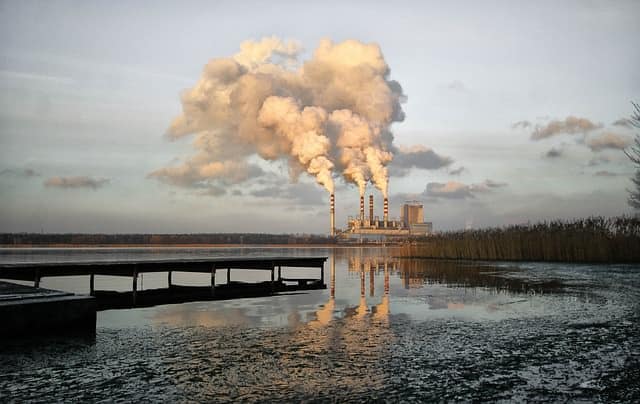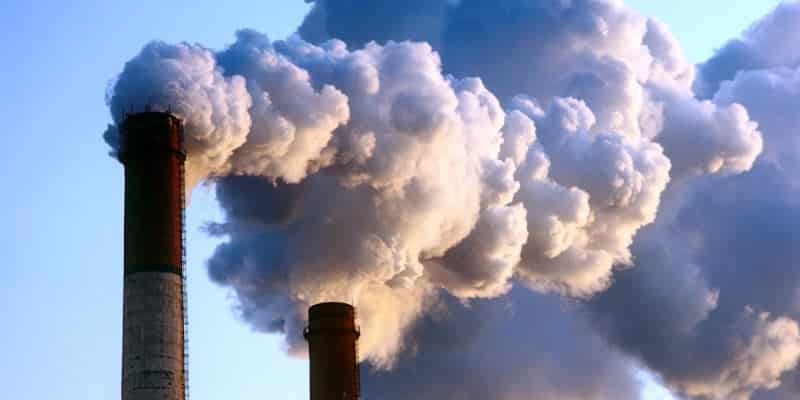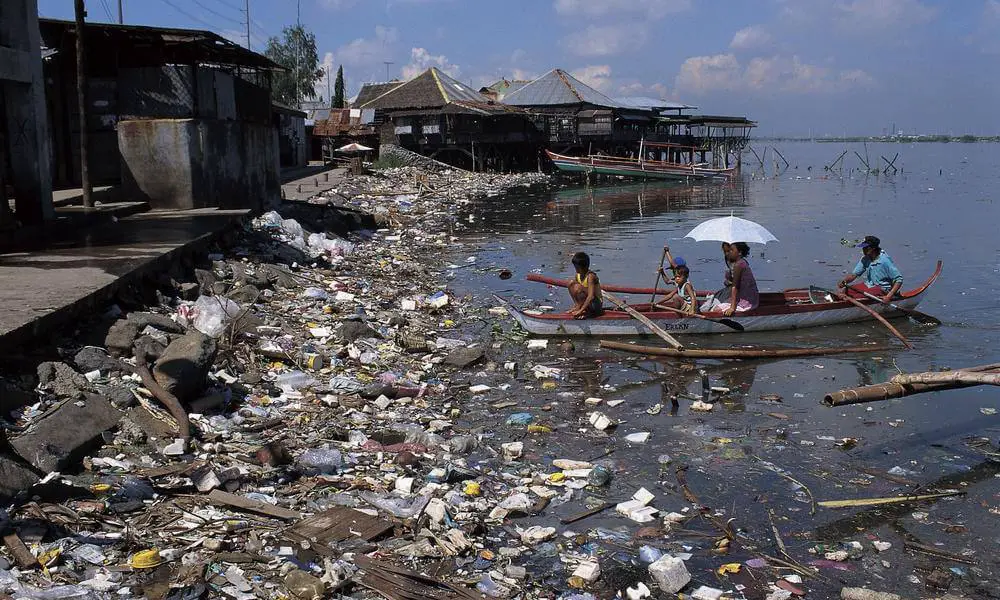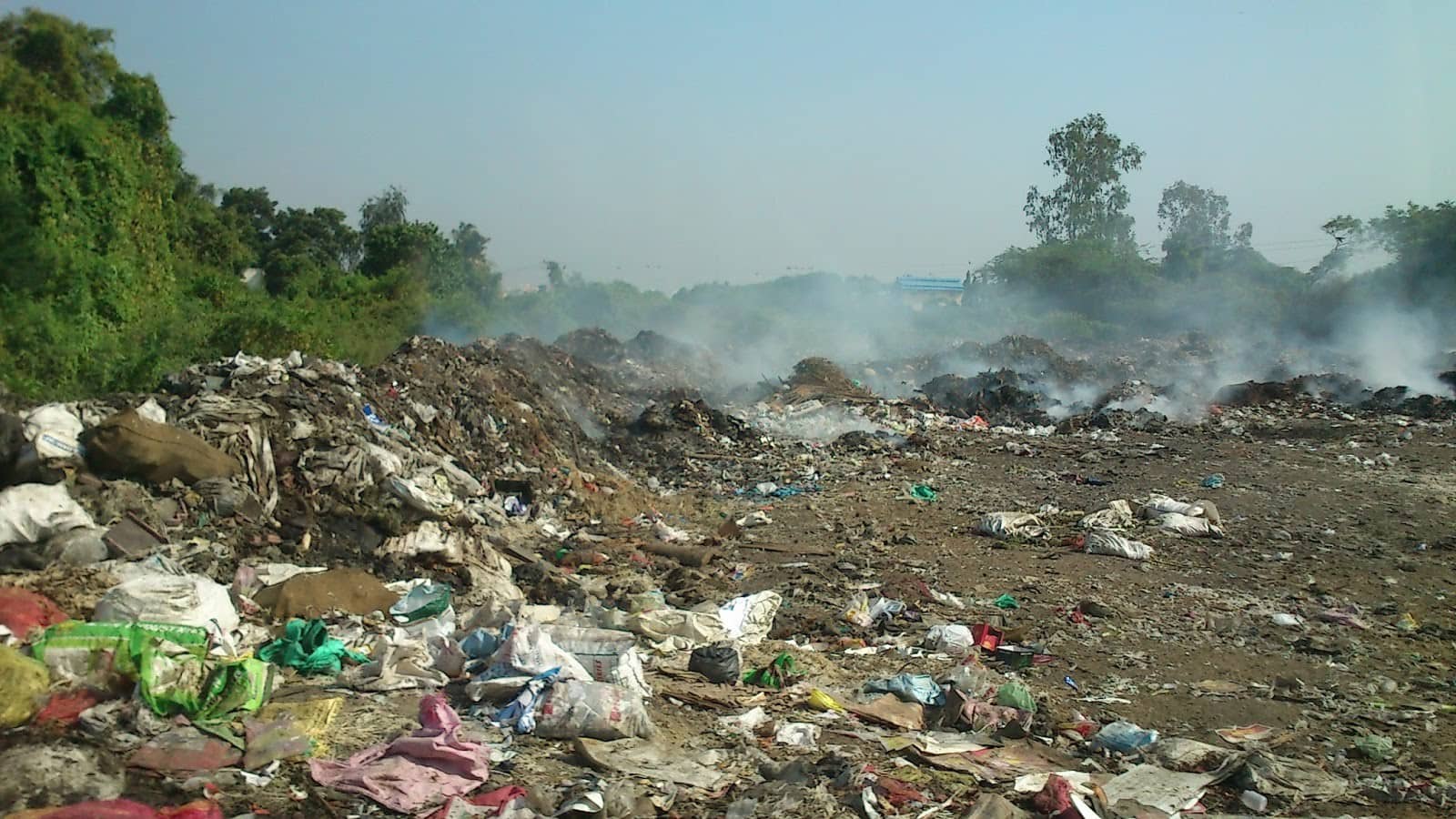We come across different types of environmental pollution such as air pollution, water pollution, soil or land pollution, noise pollution etc in our daily life. Air and water pollution are most well known and challenging problem the world is facing. Pollution in various forms began to be a severe issue following the industrial revolution in the 19th century. Pollution is said to occur when pollutants (harmful substances) enter in a system. Depending on the concentration and amount of pollutants, the severity of a pollution is measured. Evidence suggests that since the industrial revolution, contaminants in atmosphere have been growing day by day and resulting in severe damage to the Earth and increase in solid waste. Hazardous waste, toxic chemicals, suspended particles are affecting both humans and animals on daily basis. Many of the toxins, chemical and plastic have found their way in ecological food chain. Large consumption of fossil fuel has resulted in release of pollutants such as nitrogen oxide, sulfur dioxide, carbon monoxide which has resulted in various environmental issues and have adverse effect on human health.

Main Types of Pollution
The well known pollution types include air, land, water, marine etc. There are other types also which are relatively new but important to understand, these include noise, light, nuclear, thermal, visual pollution etc. All kinds have an impact on the environment.
- Air Pollution
- Water Pollution
- Land Pollution (soil pollution)
- Noise Pollution
- Radioactive/ Nuclear Pollution
- Thermal Pollution, etc
- Light pollution
- Marine Pollution/ Ocean Pollution
Air Pollution
Air Pollution occur when large number of undesirable gases and particulate matter are found in air. This results in deterioration of air quality, requires control and monitoring. If it is not controlled, it results in diseases, allergies or premature death in humans. In general, it is the contamination of air by smoke, gases (chiefly carbon dioxide, sulphur dioxide, and nitrogen dioxide), suspended particles, particulate matter and other air pollutant. It is directly related to greenhouse effect & global warming which is primarily caused due to carbon di oxide & other greenhouse gases.

Effects of Air Pollution
Air pollution has both direct and indirect impact and effect our lives in different manner. Air pollutants include both point source and non point source pollution. These pollutants have adverse effect on air quality and thus need to be brought to a minimum. Some of these effects/ results are mentioned below:
- Formation of Photochemical Smog: When pollutants like hydrocarbons and nitrogen oxides combine in the presence of sunlight, smog is formed. It forms a yellowish brown haze especially during winter and hampers visibility. It also causes many respiratory disorders and allergies as it contains polluting gases.
- Depletion of Ozone layer: Ozone is known to absorb the Ultraviolet (UV) rays present in the sun’s radiation. Ozone layer protects us from the harmful effects of the UV rays. However, hydrocarbons such as the chlorofluorocarbons (CFCs) destroy the ozone molecules which deplete the ozone layer. Ozone holes have been detected in the atmosphere which permit the UV rays to reach the earth’s surface. The harmful effects of the UV rays are visible in the countries such as Australia and New Zealand where the rate of skin cancer is higher than the other regions of the world.
- Aerosol Formation: Aerosol is formed by the dispersion of solid or liquid matter in the atmosphere. Aerosols are formed by the pollutant particulate matter like carbon particles. If the aerosols form a thick layer in the troposphere, they affect the weather conditions by blocking the solar radiation. Aerosols are also deposited on the leaves and affect the photosynthesis.
Causes & Sources
Causes include burning of fossil fuels such as coal and petroleum in vehicles, industries and coal based electric power plants. Fossil fuels are being used in large quantities for over centuries in one or other form. Burning of crops, waste and garbage are another equally damaging to the environment. Construction and building activity though does not result in release of harmful gases directly but it adds large amount of particulate matter and other harmful suspended particles which causes pollution. Air pollutants and exhausting fumes from vehicles, heavy metals, natural gas, chemical reactions, the burning of fossil fuels, volatile organic compounds, Radiation spills or nuclear accidents, destructive off-gassing from things such as paint, plastic production, and so on are the major causes.
Water Pollution
Water pollution is the contamination of any body of water including lakes, groundwater, sea, oceans, etc. A few examples include lack of sewage treatment, contaminated water, lack or absence of wastewater treatment, presence of heavy metals and waste water running into the lake or streams; Industrial waste drips polluting groundwater, the illicit putting of stuff or items within water bodies etc. The most explicit kind of water pollution affects oceans, lakes, and rivers. It also results in death of water bodies, kill organisms and fish, crabs, birds, seagulls, dolphins, etc. The increased level of contaminants and exploiting existing natural resources has resulted in acute shortage and lack of clean water in many urban areas. It have an direct impact on waste quality as the underground sources also gets affected by those toxic contaminants.
Causes and Sources
Pollution due to daily activities of humans is the main reason behind polluted water. The most polluting type include discharging untreated industrial waste, toxic chemical and sewage into as lakes, ponds and rivers. Plastic materials such as bottles, plastic bag, packaging material also find their way to water bodies which adds to the pollution and adversely affects aquatic life. Another example include mixing up of high temperature (hot water/ discharge) resulting in sudden change and rise in temperature. Acid rain is also regarded as one of the polluting factor.

Effects of Water Pollution
Water pollution has various impacts on humans and animals. Due to increased contamination, major cities are facing acute water shortage for general purpose and as well as shortage of drinking water. Although major part of world is covered with water bodies, sources of fresh water are very limited. Some of the major effects include:
- Shortage of potable water
- Pollutants and metallic compounds entering into food chain.
- Increase in water borne diseases such as cholera, diarrhoea, typhoid etc.
- Loss of aquatic life and plants.
Soil Pollution or Land Pollution
Soil Pollution takes place there is large amount of toxic chemicals, pollutants or impurities in the soil. It presents a high risk to plants, wildlife, humans and indeed, the soil itself. Quality of soil has direct impact on the crops and farming because of which crop yield is greatly reduced. Soil pollution is also called as soil contamination, soil degradation or land degradation and changes the characteristics of soil. A high or low Ph value, changed chemical composition, loss of nutrients, presence of chemicals, fertilizers, pesticide, herbicides etc are the major causes. Removal of top layer of soil is another form of pollution.
Massive cutting of trees, referred to as deforestation it is a major contributor of land pollution. The roots of trees which binds the soil gets lost with time because of running water & also because of strong winds. In hilly and mountain areas, trees play even a much more important role and keeps big rocks in place. Because of activities such as blasting, cutting of trees and construction in hilly areas, occurrences of landslides have increased.

Causes and Sources of Soil Pollution
The primary cause is the presence of human activities such as industrial waste, agricultural waste, improper waste disposal, accidental oil spills, acid rain, etc. It is a major problem with agricultural areas because of extensive use of human-made waste products which are full of chemicals. Some of the causes are same as that of water pollution like acid rain, discharge of untreated sewage and industrial waste. Additionally, throwing of garbage, especially plastic material such as plastic bags contributes substantially to this kind of pollution since they are non biodegradable. Burning of crops after harvesting also has negative effect on the soil and it lowers its fertility. Agricultural runoff and surface runoff are also the contributory factor.
Effects of Soil Pollution
Effects include the effect on the health of humans, effect on the growth of plants, decreased fertility, toxic dust, changes in soil structure, etc. It directly affects the quality and quantity of crops.
- Negative impact on crop production, crop failure and low quality food.
- Adverse effect on humans and animals because of contaminated food.
- Might also cause skin problems and pose health risk.
Noise Pollution
Noise pollution is an undesirable and harmful noise which has a negative impact on human health and the environment. It has become more of an environmental issue since the industrial age. It is disturbing or extreme noise that can harm the activity or balance of human as well as animal life. It is one of the most common causes of hearing loss in the United States and one of the leading causes of hearing loss and hearing loss in children and adults. Construction, transport and daily human activities all play a role in generating the noise. We are exposed to high sound levels throughout the day, whether at home, at work or in public places such as schools, hospitals, parks, schools and other public places. Noise above 80 – 85 decibels is termed as noise pollution, these standards vary from countries to countries. The standards differ based on the area types such as residential, industrial or commercial etc.
Causes and Sources
The cause of most outdoor noise globally is primarily originated from machines and transportation systems, motor vehicles engines, factory machine sounds, aircrafts, and trains. It results from machines, construction activities, and music performances.
Effects of Noise Pollution
Effects include tinnitus, hearing loss, sleep disturbances, hypertension, high-stress levels, and other destructive effects on humans. It causes uneasiness and damage to living being’s mental and physical health.
- A regular exposure to elevated noise levels can lead to serious health problems for humans and other living organisms.
- Stress – related illnesses, loss of productivity, and even death from heart disease, stroke, diabetes, cancer, heart attack, and heart failure.
- Other health problems such as heart attacks, strokes, and strokes, if we are exposed to prolonged exposure, especially if we are repeatedly exposed to noise.
Radioactive/ Nuclear Pollution
Radioactive or nuclear pollution is a different type of pollution, it is caused because of radioactive contamination (radio-logical contamination). It is not very common in everyday life but of particular concern where radioactive material and radioactive substances are used. The risk of radioactive contamination increases in vicinity of Nuclear thermal power plants, factories, in major hospitals etc and can cause serious problems if the radiation and exposure is not controlled. Generally, the use of such harmful substance is very careful manner in controlled environment. This is because of the widespread and long lasting damage in case of any leak or contact with such substance. Dealing with radioactive waste becomes particularly important because of the lack of safe disposal of such waste, thus mishandling of radioactive waste can cause huge damage.
Other Pollution Types
- Light pollution: It is a broad term that denotes many problems that are caused by the useless, ugly, and pointless use of artificial light. Specific class of light pollution consist of light trespass, over-illumination, glare, light clutter, and sky glow.
- Thermal pollution: It denotes the sudden increase or drops off in the hotness of ocean, lake, river, sea or pond by human influence. A general reason of thermal pollution is the use of coolants by power plants and business firms.
- Construction Waste: Waste generated due to construction activities in form of debris, fumes, air pollution due to particulate matter etc. Construction waste and other solid waste which is generated due to demolition or new construction activity.
- Nuclear or Radioactive pollution: It can happen because of the release of radioactive stuff or high-energy elements into the air, water, or soil on account of excessive human activity, either by mistake or intentionally. Nuclear pollutants and nuclear waste come from nuclear power plants, nuclear weapons, medical equipment and treatments.
- Ocean or marine pollution: This is caused because of the pollutants and unwanted material entering into water bodies. It can be result of such material from various lower level water bodies or direct dumping into oceans. Major causes are marine debris, chemical contamination, plastic pollution etc.
Read our detailed article on Marine or Ocean Pollution.
Major Issue and What is Being Done?
Global Warming: Most of the solar radiation entering the earth’s atmosphere is reflected back into the space. However some of the heat is absorbed by the gases like the carbon dioxide. This serves to keep the earth warm much like the greenhouses. Greenhouses are glasshouses which maintain a temperature higher than the surroundings for the plants to grow and yield better. The other gases that contribute to this are water vapour, methane, chlorofluorocarbons (CFCs) and nitrous oxide. These gases are called the greenhouse gases.
Climate Change: This has an adverse effect on climate of different regions. Moreover, distribution of plants and animals is also disturbed. Food and agricultural production will be hit drastically. Melting of snow caps and resultant increase in sea levels. This will submerge parts of coastal cities of Calcutta, New York, London and other major cities.
Environmental Considerations, Rules & Regulations: Environmental law, rules and regulations have been formed all over the world. Environmental Protection Agency, Water Department, Pollution Boards, NGOs and departments have been formed. These agencies or departments forms guidelines, policies and acts to check the pollution levels and pollution control. They also work on collecting data about worst polluted places, hazardous waste sites, changes in pollution levels etc. Rules & regulations in form of acts such as clean air act defines the acceptable level, defines penalties, actions and other requirements to be kept in mind. Depending on the need, such rules are applicable to individuals, business entities, industries, manufacturers and as well as government undertakings.
There are millions of people worldwide who are affected because of one form of pollution or other. Considering the large impact of various type of pollutions, not only developed countries like United States, United Kingdom, Japan etc needs to be concerned but each and every single individual should care about it. Recycling is gaining importance along with waste reduction & waste management. Alternate and renewable sources of energy are being explored and environmental monitoring is being emphasises. Use of solar energy & wind energy are the most widely used form or renewable energy. It is a collective responsibility to save our natural resources. United Nations Sustainable Development Goals also puts emphasis on saving environment.
Facts About Environmental Pollution:
- America is one of the major polluter in world, not because of the carbon emissions but because of the lifestyle. Americans use a large number of resources, generate 30 billion foam cups, 220 million tires, and 1.8 billion disposable diapers every year. (As per Green Schools Alliance).
- Air pollution takes millions of lives every year and contributes upto 7.6% of deaths worldwide. It is a matter of public health. (Source: WHO). Indoor air pollution is also becoming a major threat as in many cases indoor air has found to be more harmful as compared to ambient air.
- The Mississippi River drains the lands of nearly 40% of the continental United States. It also carries an estimated 1.5 million metric tons of nitrogen pollution into the Gulf of Mexico each year, resulting in a dead zone each summer about the size of New Jersey.
- Pollution in China & India has the ability to change weather patterns in the United States. This is because of the large and fast movement of winds by means of jet streams. These jet streams takes less then a week to take the heavy pollution to USA which stops clouds from producing rain and snow.
- 82.8% of the soil in China contains contaminants such as copper, lead, mercury, arsenic etc making China one of the most affected countries in the world.
- In India, the agencies responsible for making course curricula like CBSE, NCERT, ICSE puts in special efforts to educate school students on environment.